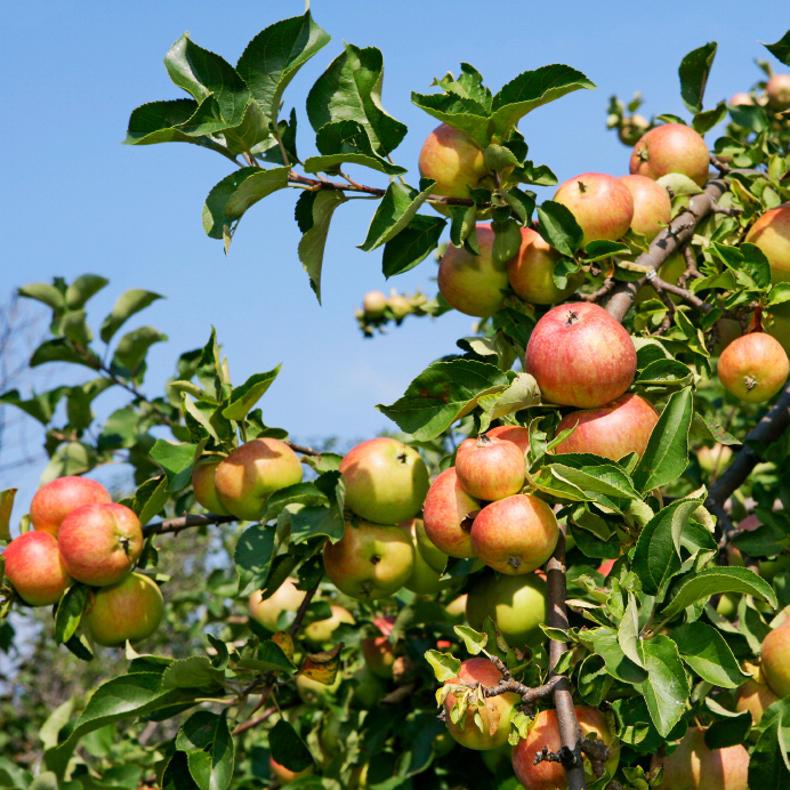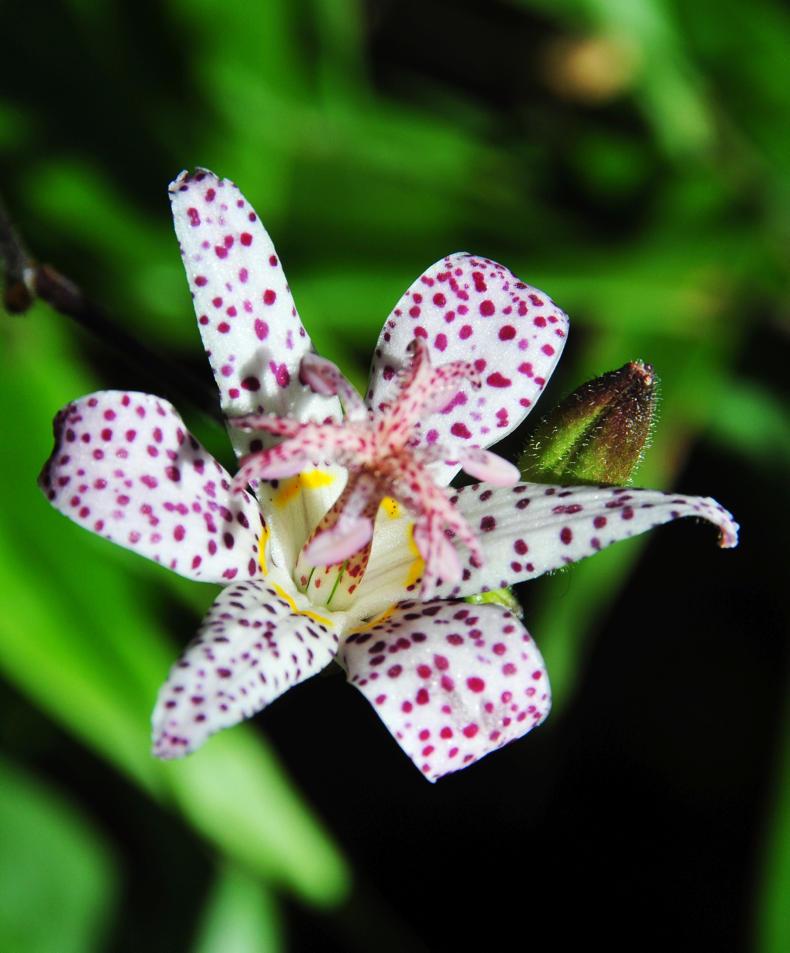The flowers may be spotted, like a toad’s back, but the beautifully marked purple and white flowers are carried elegantly on tall stems to about 80cm and each stem carries several upward-facing flowers.
These are not toad-like but the most beautiful gems in miniature when examined up close. The alternative common name of “forest orchid” has gained some currency, although this might lead to confusion. The most common kinds are either white with fine purple spotting or pale purple with darker purple spotting. The individual flowers are about 3cm across and the flower spike has several flowers from brown buds spaced along its length.
Toad lily is late-flowering. It only begins to flower in late summer and continues in September. It is useful to have some plants like this that come on late in the growing season to bring fresh colour to the garden as so many other flowers are tailing off, or finished for the year. The purple colour is good with the many yellow shades of autumn.
The lily family
There are two main species grown, with Tricyrtis formosana being the more popular because it is the more showy of the species. This comes from Taiwan and it has purple colour with more spotting than the others and it is striking from the distance. This is because it shows its flower spikes better than the other common species, Tricyrtis hirta, which used to be called Tricyrtis japonica. This Japanese toad lily is pretty too, but it has a habit of carrying leaves right the way up the stems and the flowers are carried in the leaf axils. This has a tendency to hide the flowers to some extent, but it is still a good plant. Of the different kinds of toad lily, the main ones flower in early autumn, but there are some early summer flowering kinds too. There are some yellow-flowered kinds too, such as Tricyrtis flava, but these are even more unusual.
Being related to lily of the valley, it is not surprising that the toad lily likes cool woodland conditions to thrive. It likes soil with plenty of well-rotted organic material, especially well-rotted leaf mould. This holds moisture in the soil but is free-draining at the same time. All kinds like some shade and can tolerate quite heavy shade, although this will likely delay flowering, especially in colder areas. It likes much the same conditions as ferns and looks very well with ferns nearby.
Although it appears a bit delicate, toad lily is quite tough and reliably persistent. Unlike some plants, it does not die out easily. It needs to have the right conditions to grow and flower well but, when these are supplied, it is a ready grower.
This is much the same for lily of the valley, which can be slow to get going, but when it has the right soil and position can be difficult to stop.
The toad lily spreads by underground rhizomes to make a welcome clump but it is not an invasive plant. The leaves are very like those of lily of the valley, broad and veined. Look out for this beauty and get it going in a suitable place, dividing it to make more plants to create a good swathe of it in a lightly shaded place. It is originally from high-altitude woodland in Taiwan and it is fully hardy in a normal winter. Toad lily or forest orchid, this is definitely an addition to the autumn garden.

There are remarkably good crops of apples this year, which is quite a surprise given the very cold spring and the threat of severe drought in summer. Not only is there generally a very good crop but the apples are of good flavour which is sometimes compromised by a large load of fruit on the tree.
It looks like the cold spring actually helped because it delayed flowering into May, a dry month, which was very good for pollination and fruit set from the blossom laid down the previous year, a good year of growth. Then when the drought came, the fruit was relatively small and undemanding of moisture.
There was an early drop of non-viable fruit and the remainder swelled rapidly once rain returned. Indeed trees put on more growth. The reason for such rapid growth is the massive amounts of sunshine, much greater than average directly powering growth.
Flowers
Herbaceous perennials that have grown too wide can be lifted and divided over the coming weeks, but not grasses. Summer bedding can be removed in preparation for planting spring bedding. This is the main time for planting spring bulbs and containers.
Fruit, vegetables and herbs
The vegetable garden should get a good tidy-over without delay, if not already done. Try to clear weeds. Remove old cabbage, cauliflower, beans, peas and sweet corn stalks. Chop up the old plants for the compost heap. Prepare for planting fruit trees and bushes.
Trees, shrubs and roses
Check that staked trees are firmly tied and the stem is not rubbing against the stake or the tie is not too tight. Prepare for planting new trees, hedges, shelter belts and garden woodland areas by controlling existing grass and weeds.
Lawn
Moss growth has been strong in the damp weather. Sulphate of iron mosskiller can be applied now if moss is taking over a lawn. An autumn lawn fertiliser can be used or a low-nitrogen compound fertilizer to boost growth a little through the winter months.
Greenhouse and house plants
Tidy up all debris and reduce watering to just enough to keep pots from going dry. Most of the greenhouse crops can be cleared out in the next few weeks - tomatoes, chillies, melons and cucumbers. Throw out any old plants that are past their best or diseased.






 This is a subscriber-only article
This is a subscriber-only article










SHARING OPTIONS: